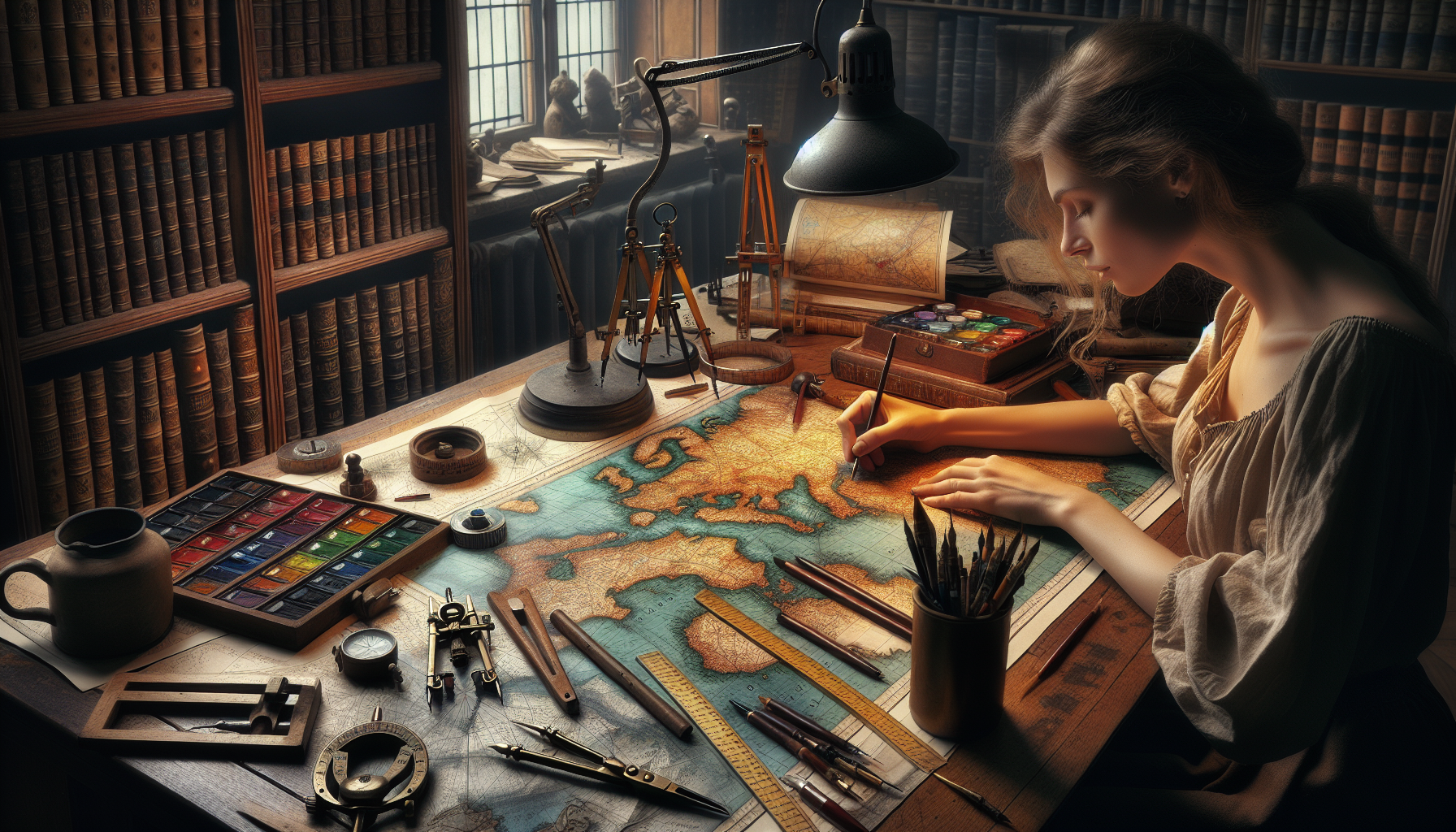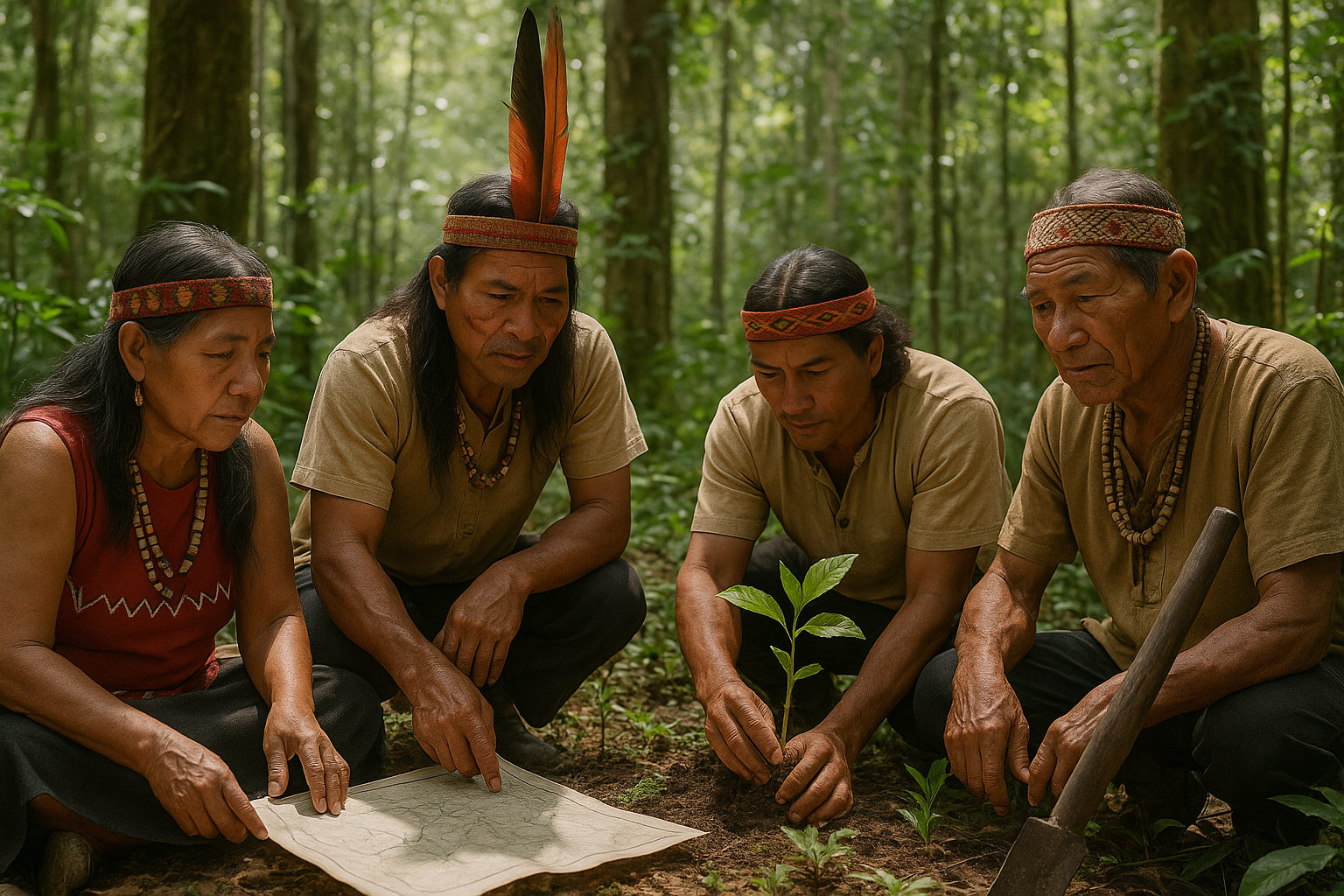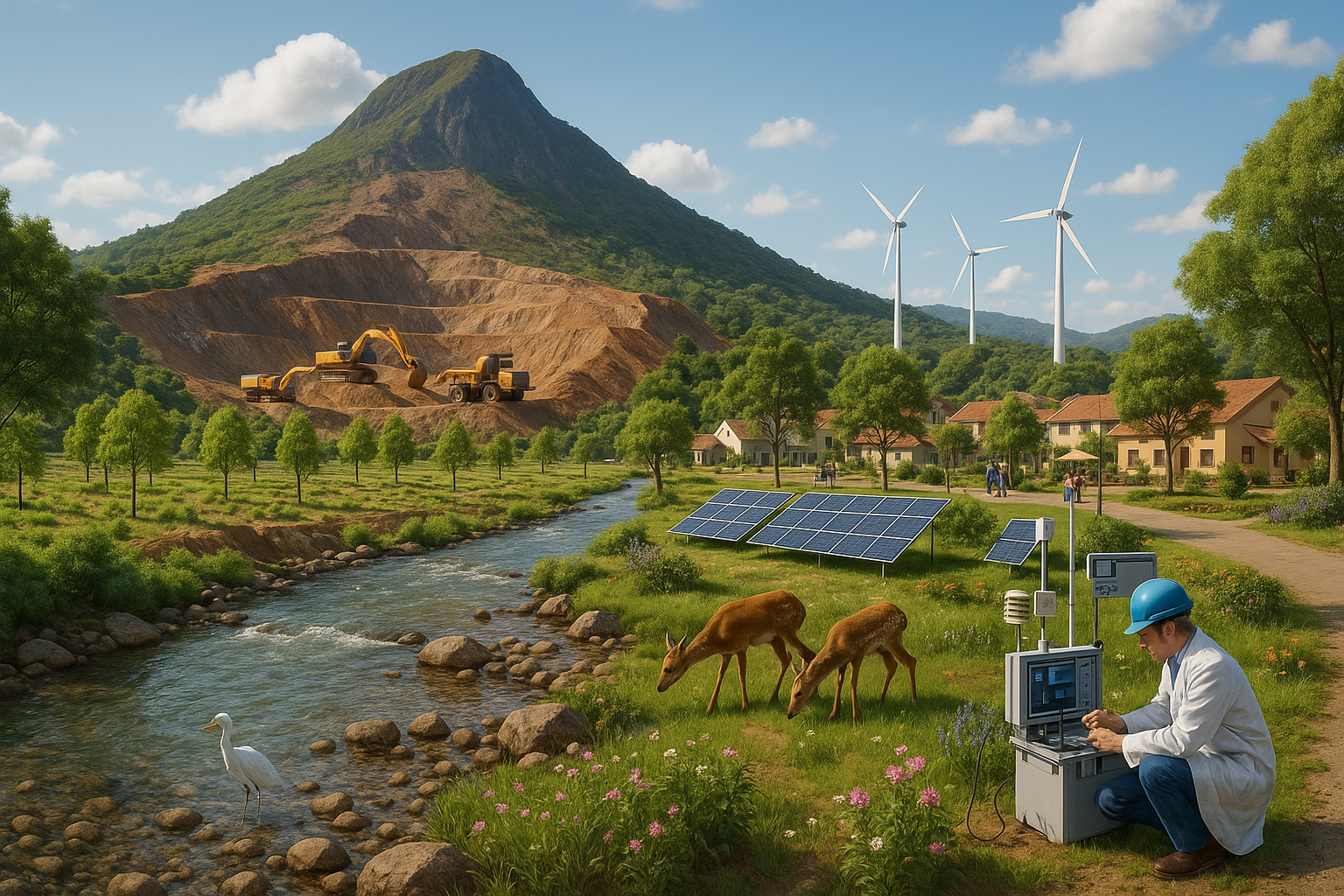In an era where technology dominates our daily lives, it might seem surprising that traditional skills like map drawing are experiencing a renaissance. Yet, this resurgence is not without reason. As we navigate through the digital age, there’s an inherent desire to connect with the tangible, the tactile, and the creative processes that have shaped human civilization for centuries. Map drawing, once a tool for explorers and adventurers, is now an art form that allows us to express our creativity while honing our observational skills. Whether you’re an artist looking to expand your repertoire or a novice eager to explore a new hobby, mastering the art of map drawing offers a unique blend of challenges and rewards. This article will guide you through the essentials of this fascinating craft, offering insights and techniques to help you create your own captivating cartographic masterpieces.
At its core, map drawing is more than just putting pen to paper; it’s an exercise in storytelling and a testament to human curiosity. Each line and contour tells a story of exploration, discovery, and the quest to understand the world around us. In today’s digital landscape, where GPS and online maps reign supreme, creating a hand-drawn map can seem like a nostalgic endeavor. However, it offers something that no digital representation can—an intimate and personalized view of the world. It’s about capturing the essence of a place, imbued with personal interpretations and artistic flair. By mastering the art of map drawing, you’re not just learning to sketch; you’re learning to see the world differently, through a lens of creativity and imagination.
This article will walk you through the foundational elements of map drawing, starting with the basic tools and materials you’ll need to get started. From there, we’ll delve into techniques for capturing geographical features with accuracy and artistic style. You’ll learn how to incorporate elements such as topography, landmarks, and even whimsical embellishments to make your maps truly one-of-a-kind. We’ll explore the history and evolution of cartography, providing context and inspiration from some of the most iconic maps throughout history. Additionally, we’ll discuss the psychological benefits of map drawing, including its ability to enhance cognitive function, boost creativity, and provide a meditative escape from the hustle and bustle of modern life.
By the end of this article, you’ll not only have the knowledge and tools to create your own maps but also a deeper appreciation for the artistry and skill involved in this ancient craft. Whether you’re charting the streets of your hometown, imagining fantastical lands, or planning your next great adventure, map drawing offers endless possibilities for exploration and creativity. So, grab your pencils and paper, and let’s embark on a journey to unlock the secrets of mastering the map. As you explore this intersection of art and geography, you’ll find that the only limit is your imagination. 🌍✏️
The Fascinating World of Cartography
Map drawing, or cartography, is an art form that has been around for centuries. It is the practice of creating representations of the Earth’s surface and has evolved from the simple hand-drawn maps of ancient times to the highly sophisticated digital maps we use today. Cartography combines science, aesthetics, and technique to communicate spatial information effectively. In this section, we’ll delve into the history and evolution of map-making, exploring how it has shaped our understanding of the world.
The earliest maps were created by ancient civilizations to aid in navigation and to demarcate territories. These rudimentary maps, often drawn on clay tablets or parchment, were not just tools for travel but were also used to convey information about the world as it was known at the time. Ancient cartographers would rely on explorers’ accounts, celestial observations, and mythological narratives to craft their maps, which were as much a reflection of culture as they were of geography.
As civilizations advanced, so did the complexity and accuracy of maps. The Age of Exploration in the 15th and 16th centuries was a pivotal period for cartography, as European explorers ventured into uncharted territories. This era saw the creation of detailed maps that not only charted new lands but also incorporated elements like compass roses and scale bars, enhancing navigational accuracy. The invention of the printing press further revolutionized map-making by allowing for mass production and wider distribution.
The Artistic Side of Map Drawing
While maps are fundamentally functional, they also have a strong aesthetic component. The artistry in cartography is evident in the use of colors, symbols, and intricate designs that embellish many maps. This blend of art and science is what makes map drawing a unique and engaging discipline. Cartographers must balance the need for accuracy with the desire to create visually appealing and easily interpretable maps.
Modern map-making involves a combination of traditional techniques and digital technology. Today, cartographers use Geographic Information Systems (GIS) and other software to create maps that are not only accurate but also highly customizable. These tools allow for the integration of vast amounts of data, enabling cartographers to produce maps that can display everything from topographical details to population density and climate information.
Tools and Techniques for Map Drawing
Creating a map involves a variety of tools and techniques, from the traditional to the cutting-edge. In this section, we’ll explore some of the most commonly used tools in modern cartography, as well as the techniques that cartographers employ to craft accurate and visually striking maps.
One of the fundamental tools in map-making is the GIS, which allows cartographers to visualize, analyze, and interpret spatial data. GIS software enables users to overlay different data sets, creating multi-layered maps that can reveal patterns and relationships not immediately apparent. This capability is particularly useful in fields like urban planning, environmental science, and public health.
| Tool | Function | Example |
|---|---|---|
| GIS Software | Data visualization and analysis | ArcGIS, QGIS |
| Drawing Tablets | Digital sketching | Wacom, Huion |
| Printing Tools | Map reproduction | Large-format printers |
For a deeper understanding of how these tools are used, watch this informative video: The Art and Science of Cartography – Channel Name. 📽️
Applications of Cartography in the Modern World
Maps are not just historical artifacts or tools for navigation; they have a wide range of applications in today’s world. From urban planning and environmental conservation to disaster management and marketing, the utility of maps is virtually limitless. In this section, we will explore some of the contemporary uses of maps and how cartography continues to be a vital tool in various fields.
Urban planners rely heavily on maps to design and develop cities. By analyzing spatial data, planners can make informed decisions about infrastructure development, zoning, and resource allocation. Maps help visualize potential impacts of new projects, such as traffic flow or population density changes, allowing for more sustainable urban growth.
- Urban Planning
- Environmental Conservation
- Disaster Management
- Marketing and Business Analysis
The Future of Map Drawing
As technology continues to advance, the future of map drawing looks promising and exciting. Emerging technologies such as augmented reality (AR), virtual reality (VR), and artificial intelligence (AI) are set to revolutionize the field of cartography, offering new ways to create and interact with maps.
AR and VR technologies are already being used to create immersive map experiences. These technologies allow users to interact with maps in a 3D space, providing a more engaging and intuitive way to explore geographic information. This is particularly useful in fields like education and tourism, where users can virtually explore historical sites or navigate through a city.
| Technology | Potential Impact | Current Applications |
|---|---|---|
| Augmented Reality | Immersive map experiences | Education, Tourism |
| Virtual Reality | 3D map interaction | Urban Planning, Gaming |
| Artificial Intelligence | Data analysis and automation | Map Design, Predictive Modeling |
Explore the cutting-edge possibilities of map drawing with this fascinating video: Mapping the Future: New Frontiers in Cartography – Channel Name. 🌍

Conclusion
In conclusion, “Mastering the Map: Unleash Your Creativity with The Art of Map Drawing” is an illuminating exploration into the world of cartography and creativity, highlighting how map drawing can be a powerful tool for personal expression and practical application. Throughout the article, we delved into the historical significance of maps, tracing their evolution from simple navigational aids to intricate works of art that capture the imagination. This journey through time not only underscored the enduring relevance of maps but also emphasized their role in connecting us to our environment and to each other.
One of the primary points discussed was the fusion of art and science inherent in mapmaking. Cartography is unique in its demand for precision and creativity, requiring the mapmaker to balance accurate representation with visual appeal. This duality makes map drawing a rewarding discipline, offering endless opportunities for innovation and personal flair. Whether you are a seasoned artist or a novice, the skills and techniques of mapmaking are accessible to all, providing a versatile medium for storytelling and exploration.
The article also explored the therapeutic and educational benefits of map drawing. Engaging in this creative process can be a meditative activity, promoting mindfulness and reducing stress. Additionally, it serves as an educational tool, enhancing spatial awareness and geographical knowledge. By sketching maps, individuals can better understand the world’s complexities, fostering a deeper appreciation for the diverse landscapes and cultures that populate our planet.
Moreover, we discussed the role of technology in modern mapmaking. While traditional methods of hand-drawing maps remain cherished, digital tools have expanded the possibilities for cartographers. Software and applications provide precision and efficiency, allowing for the creation of highly detailed and interactive maps. This technological advancement has democratized the field, enabling more people to participate in and enjoy the art of mapmaking.
The importance of community was another key theme. Map drawing can be a collaborative endeavor, bringing together individuals from various backgrounds to share insights and skills. Whether through workshops, online forums, or social media groups, the cartography community is vibrant and supportive, encouraging both beginners and experts to exchange ideas and inspire one another.
The significance of maps in storytelling cannot be overstated. Maps have the unique ability to convey narratives, guiding readers through fictional worlds or recounting historical events. They serve as powerful visual aids, enhancing the depth and richness of any story. By learning the art of map drawing, one gains a valuable tool for narrative development, whether for literature, games, or personal projects.
As we conclude this exploration into the art of map drawing, it is crucial to recognize the broader implications of this craft. Maps are more than just representations of geography; they are reflections of human curiosity, creativity, and our desire to make sense of the world. They challenge us to see beyond the obvious, to explore the unknown, and to express the inexpressible.
To those inspired by this article, I encourage you to take up the pen or stylus and begin your own journey in mapmaking. Let your imagination guide you as you create new worlds and chart uncharted territories. Share your creations with others, inviting them to explore the realms you’ve brought to life. Engage with the global community of map enthusiasts, contributing your unique perspective and learning from the diverse experiences of others.
Finally, I invite you to share your thoughts and insights in the comments below. What aspects of map drawing resonate with you the most? Have you attempted to create your own maps, and what challenges or triumphs have you encountered along the way? Your feedback not only enriches the discussion but also helps build a vibrant community of creatives passionate about the art of mapmaking.
Feel free to share this article with friends, educators, and fellow creatives who might be intrigued by the possibilities of map drawing. By spreading the word, you contribute to a growing appreciation of this timeless art form and inspire others to embark on their own creative journeys.
In a world constantly in flux, maps offer us a moment of stillness, a chance to reflect on where we are and where we wish to go. Embrace the art of map drawing, and unleash your creativity in ways you never imagined. 🌍✍️
For further reading and resources, you might explore the following links:
– National Geographic’s Guide to Mapmaking [https://www.nationalgeographic.com/maps]
– The British Library’s Collection of Historical Maps [https://www.bl.uk/onlinegallery/onlineex/maps]
– ESRI’s Online Mapping Tools [https://www.esri.com/en-us/home]
These resources provide additional insights and tools to aid you in mastering the art of map drawing. Happy mapping!
Toni Santos is a visual storyteller and artisan whose creations celebrate the poetry of the natural world. Through his thoughtful artistic lens, Toni captures the elegance of botanical forms, transforming them into meaningful expressions of symbolism, resilience, and timeless beauty.
His journey is deeply rooted in a passion for flora and the mysteries they carry. From the shape of a petal to the curve of a vine, each design Toni brings to life reflects a deeper narrative — one of growth, transformation, and harmony with nature. Whether crafting symbolic floral jewelry, enchanted botanical illustrations, or seasonal visual studies, Toni’s work evokes the quiet magic found in Earth’s most delicate details.
With a background in handcrafted artistry and visual design, Toni blends technique with intention. His creations do more than decorate — they speak, often inspired by ancient meanings behind flowers, the cycles of the seasons, and the invisible bonds between nature and spirit.
As the creative voice behind Vizovex, Toni shares this botanical journey with the world, offering curated stories, handcrafted collections, and thoughtful articles that help others reconnect with nature’s symbolism and artistic essence.
His work is a tribute to:
The quiet power of flowers and their messages
The art of visual symbolism in everyday life
The beauty of slowing down to see what’s hidden in plain sight
Whether you’re an artist, a nature lover, or someone drawn to the deeper meanings behind the natural world, Toni welcomes you to explore a space where aesthetics meet soul — one petal, one story, one creation at a time.





